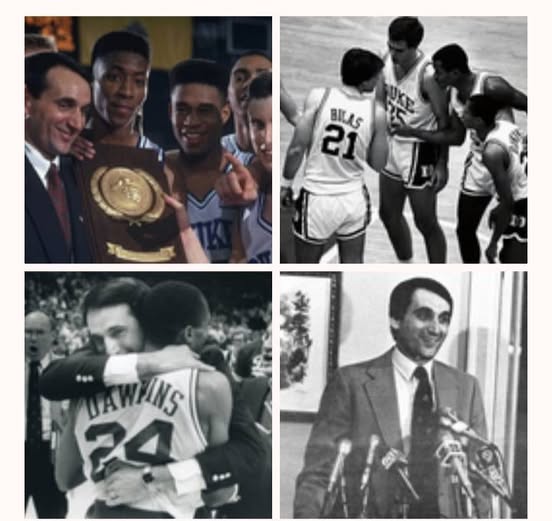What the Approved House Settlement Means for the Ohio State Football Program
The recent approval of the House v. NCAA settlement marks a transformative moment in college athletics, one that will reshape the financial and operational landscape of major programs across the country, including Ohio State football. The $2.8 billion settlement, which resolves multiple antitrust lawsuits against the NCAA, paves the way for a revenue-sharing model that will allow schools to directly compensate athletes for the first time in college sports history. For a powerhouse program like Ohio State, the implications are vast, affecting recruiting, roster management, budgeting, and even the long-term identity of Buckeye football.
At its core, the settlement establishes a framework for schools to share revenue with athletes, starting as early as the 2025-26 academic year. While the exact figures are still being finalized, reports suggest that power-conference programs like Ohio State could allocate upwards of $20 million annually to distribute among athletes. For a football program that generates over $100 million in revenue each year, this shift represents both an opportunity and a challenge. On one hand, Ohio State can leverage its financial might to remain competitive in an era where player compensation will play an even larger role in recruiting and retention. On the other hand, the Buckeyes must navigate the complexities of distributing funds fairly while maintaining compliance with whatever new regulations emerge from this settlement.
One of the most immediate impacts will be on recruiting. Ohio State has long been a destination for elite talent, thanks to its tradition of winning, top-tier coaching, and NFL pipeline. But in the new model, financial incentives will become an even bigger factor in a recruit’s decision-making process. While Ohio State’s deep-pocketed boosters and strong NIL collectives (such as The Foundation) have already positioned the program well in the NIL era, the formalization of revenue sharing adds another layer to the recruiting battle. The Buckeyes will now need to balance NIL opportunities with direct school payments, ensuring that their total compensation package remains more attractive than those offered by rivals like Michigan, Alabama, and Georgia.
The settlement also raises questions about roster management and retention. With a finite amount of revenue-sharing dollars available, Ohio State’s coaching staff and administration will need to decide how to allocate funds across the roster. Do they prioritize star players—such as a Heisman-contending quarterback or a five-star defensive end—with larger payouts, or do they adopt a more egalitarian approach to maintain locker room harmony? The answer could define the program’s culture moving forward. Additionally, the transfer portal will become even more volatile, as players may seek programs that offer better financial terms. Ohio State’s ability to retain key contributors will depend not just on playing time and development but on its willingness to match or exceed competing offers.
Financially, Ohio State is better equipped than most to handle these changes. The athletic department is one of the few in the nation that operates without university subsidies, thanks to its massive football revenue, lucrative media rights deals, and strong donor support. However, the added expense of revenue sharing will force tough budgetary decisions. Will the program reduce spending in other areas, such as facility upgrades or coaching salaries, to accommodate athlete compensation? Or will it seek new revenue streams, such as increased ticket prices or expanded merchandising? Athletic director Gene Smith and his successor will need to carefully balance these competing priorities to ensure the program remains financially sustainable.
Another critical consideration is Title IX compliance. While the settlement does not mandate equal revenue sharing between men’s and women’s sports, federal law requires that schools provide equitable opportunities for male and female athletes. Ohio State will need to ensure that its revenue-sharing model does not create disparities that could lead to legal challenges. This could mean allocating a portion of the funds to women’s sports or finding alternative ways to support female athletes, such as enhanced NIL opportunities. How the Buckeyes navigate this issue could set a precedent for other major programs.
Beyond the financial and logistical implications, the settlement fundamentally alters the relationship between athletes and the university. For decades, Ohio State football players have been celebrated as amateurs, even as their jerseys sold in campus stores and their games generated millions. Now, they will be recognized as direct contributors to the program’s financial success. This shift could strengthen player loyalty—if they feel adequately compensated—or it could lead to increased friction if disputes arise over payment amounts or distribution methods. Head coach Ryan Day and his staff will need to manage these dynamics carefully to maintain team cohesion.
The settlement also has broader implications for the competitive landscape of college football. While Ohio State is well-positioned to thrive in the new model, smaller programs may struggle to keep up, potentially widening the gap between the sport’s haves and have-nots. This could lead to further realignment, with elite programs like the Buckeyes seeking even greater autonomy within the NCAA or pushing for a super-conference structure. The long-term consequences for college football as a whole remain uncertain, but Ohio State will undoubtedly be at the forefront of shaping whatever comes next.
In many ways, the House settlement represents the culmination of a decade-long shift toward athlete empowerment. From the advent of NIL to the transfer portal’s liberalization, the NCAA’s amateurism model has been eroding for years. Now, with revenue sharing on the horizon, Ohio State football must adapt to a reality where players are not just student-athletes but paid professionals in all but name. The program’s ability to navigate this transition will determine whether it remains a perennial national title contender or falls behind more agile rivals.
For Buckeye fans, the changes may be bittersweet. While the prospect of Ohio State leveraging its resources to secure top talent is exciting, the loss of traditional amateurism marks the end of an era. Yet, if history is any indication, the program will embrace this new reality with the same ambition that has defined it for generations. Whether through innovative compensation strategies, aggressive recruiting, or continued on-field excellence, Ohio State football is poised to remain a dominant force—just in a vastly different landscape than the one it helped build.
In the end, the House settlement doesn’t just change how Ohio State pays its players; it redefines what it means to be a Buckeye. And in Columbus, where football is more than a game but a way of life, that transformation will be felt for decades to come.



